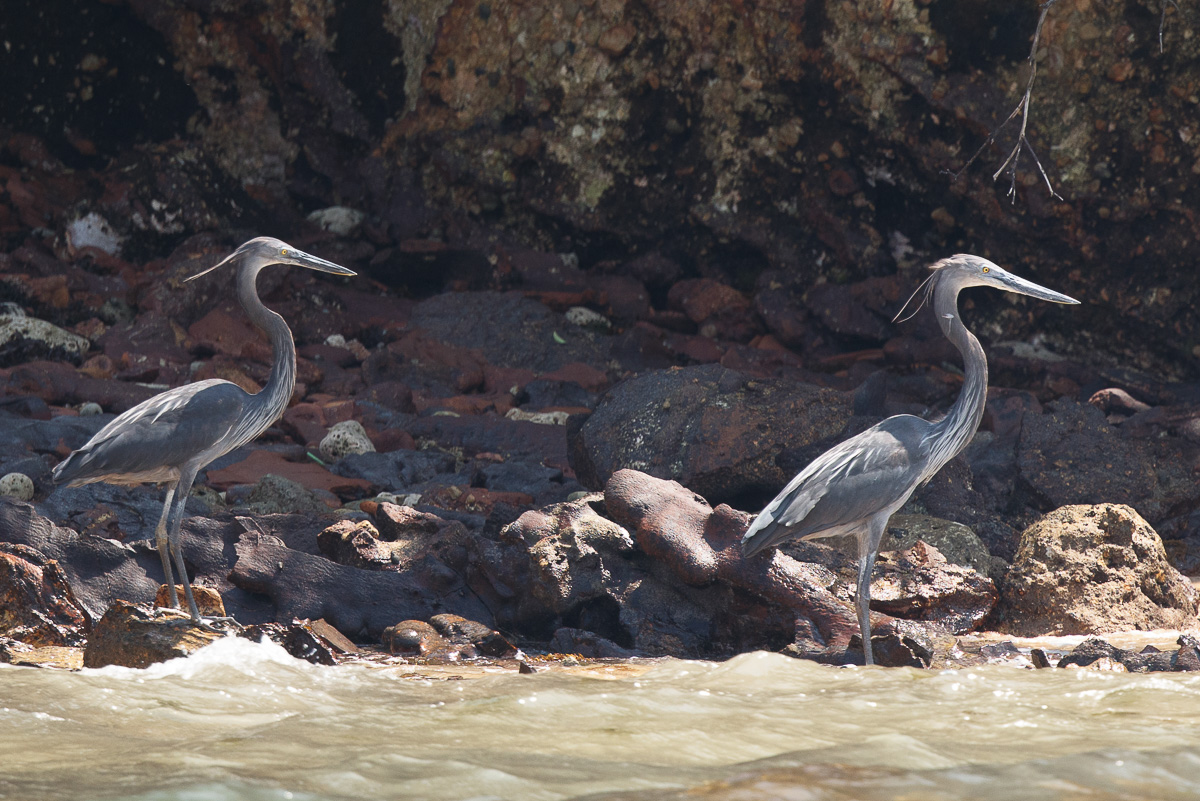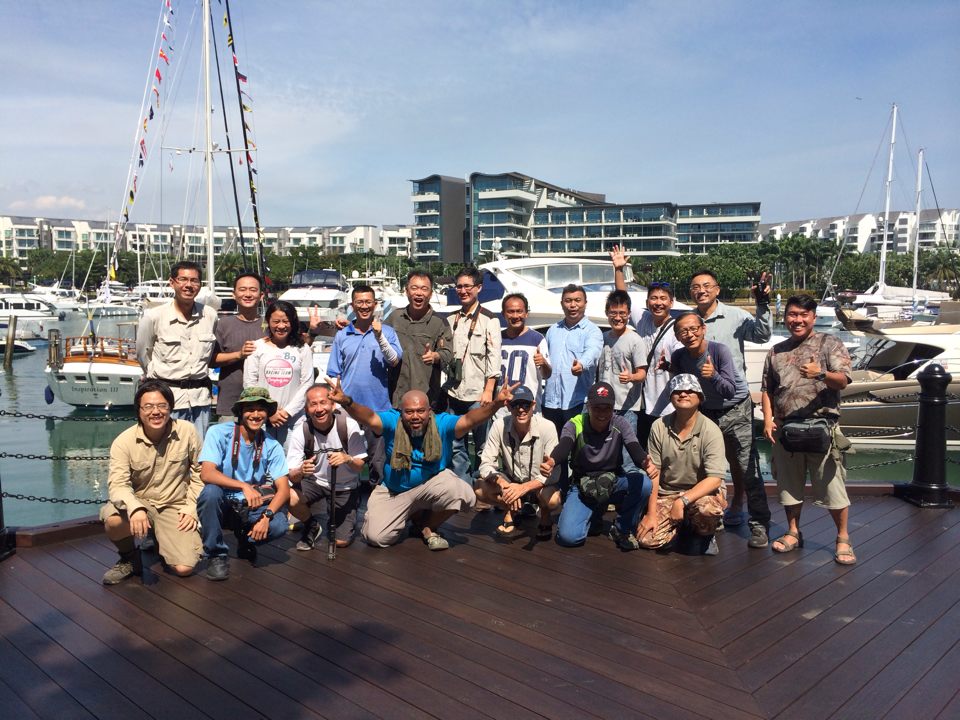A few of the regular contributors of the Singapore Birds Project organized and gathered together for a pelagic bird survey trip to the Singapore Strait. This time, we decided to head west of Sentosa (our starting point) towards the direction of Karimun Island and Kukup, Malaysia and heading back towards Singapore in a loop. This part of the straits is sadly much less explored birding wise and we wanted to find out what sort of bird life exist there.
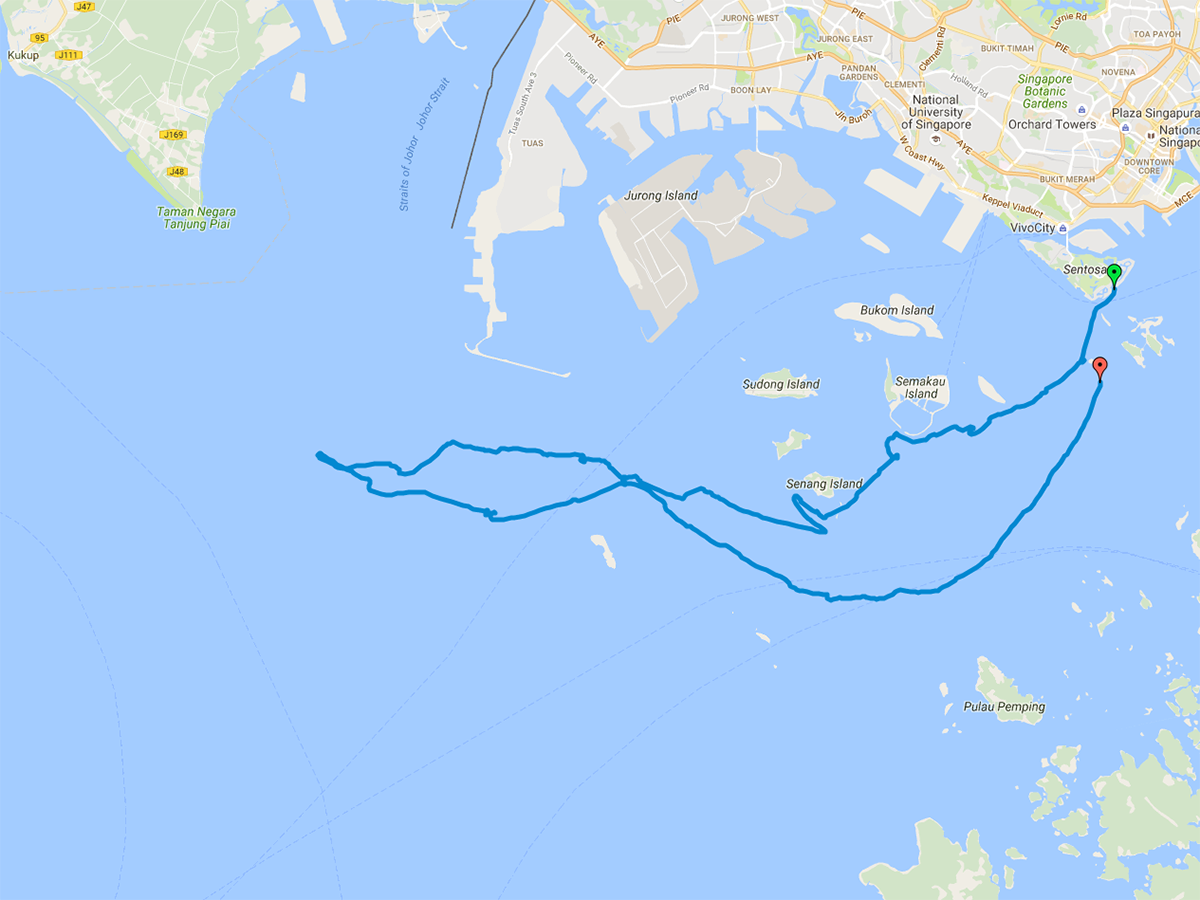
We chartered two boats. “Boon Teik” the lead boat is our regular survey boat, while “Popeye” was a new boat by the same operator and was to follow the alongside the lead boat. The author was assigned to “Popeye” so all of the bird photographed and counted are taken from this boat.
Due to some unfortunate delay, the lead boat was late, so “Popeye’ went ahead slowly towards Pulau Sebarok, where we encountered our firsts seabirds. These were Little Terns hunting in a group together with at least one Black-naped Tern. As it was still early, lighting was bad. As we slowly sailed on, we met a resident subadult White-bellied Sea Eagle out early on a hunt. This particular bird was interesting as its head was black. We suspect perhaps it’s residual oil trapped from its previous hunt, but we have no way of knowing for sure.
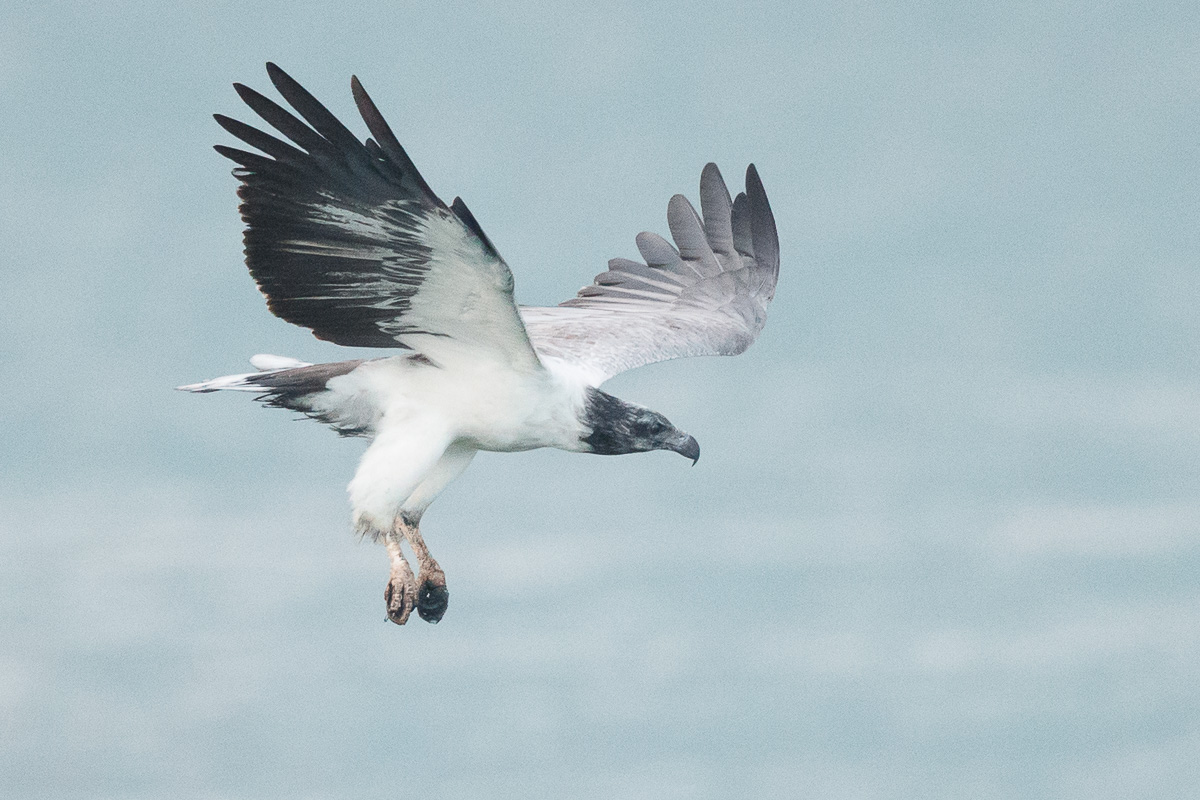
Next we saw two adult Brahminy Kites perched on a yellow structure. It’s interesting to see how our bird life use man-made structures to perch out in the sea.
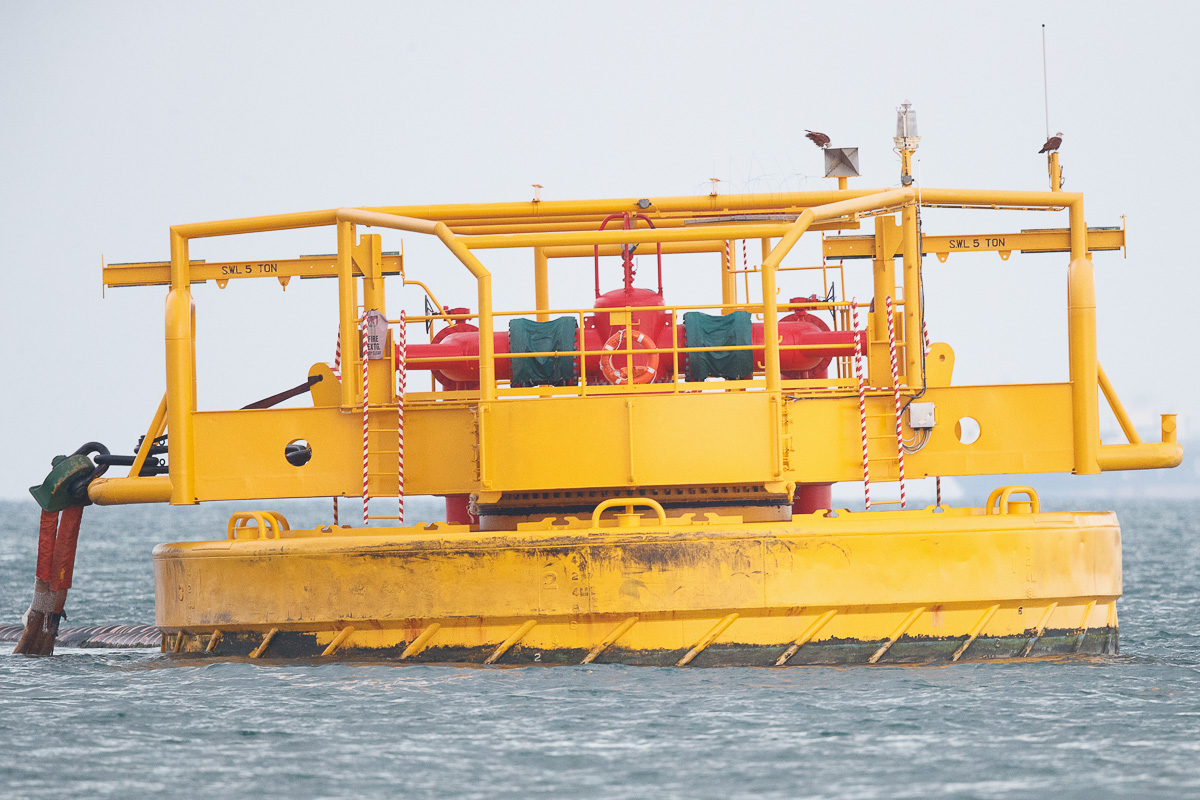
You can see that there are what look like giant “tubes” on the left hand side of the yellow structure. That was where we spotted the resident white-morph Pacific Reef Heron. That bought some joy to the bird photographers as it’s increasingly difficult to find this variant of the species in the mainland.
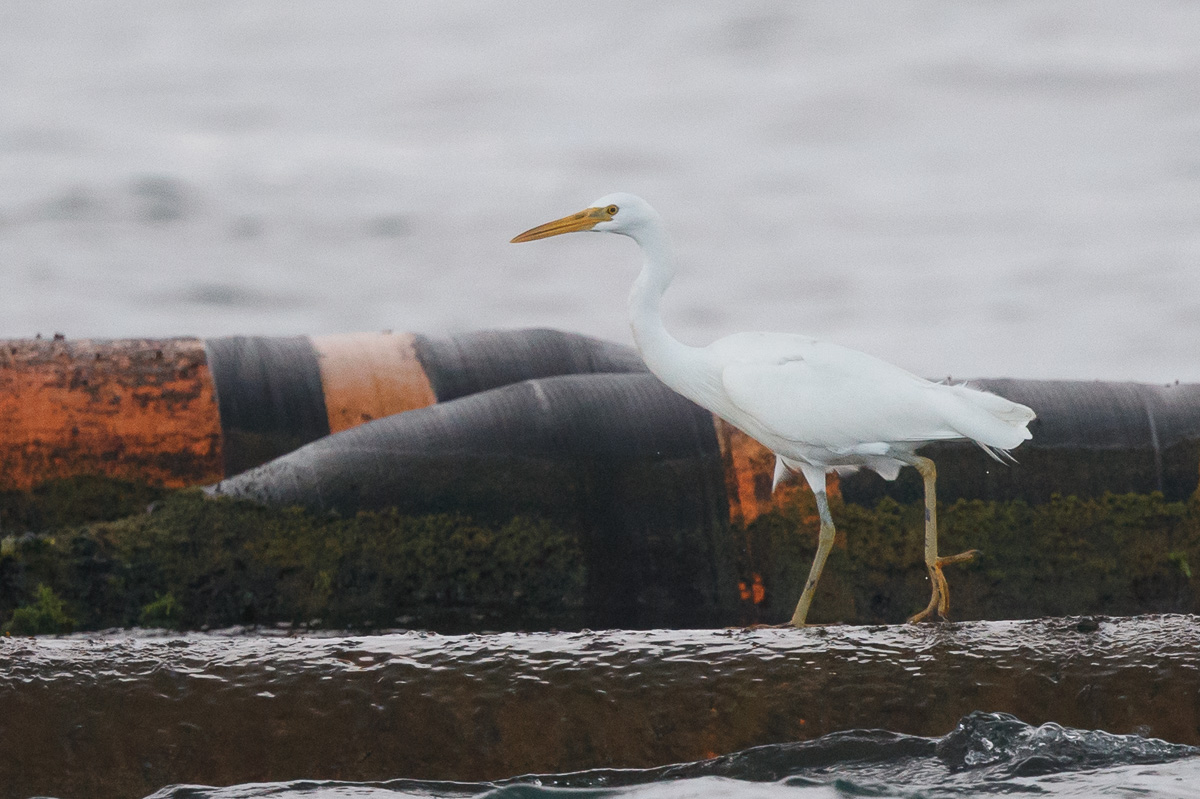
More Little Terns were seen at Pulau Semakau and leading to Raffles Lighthouse. By then, the lead boat caught up with the second boat and we started speeding up to head towards the open sea.
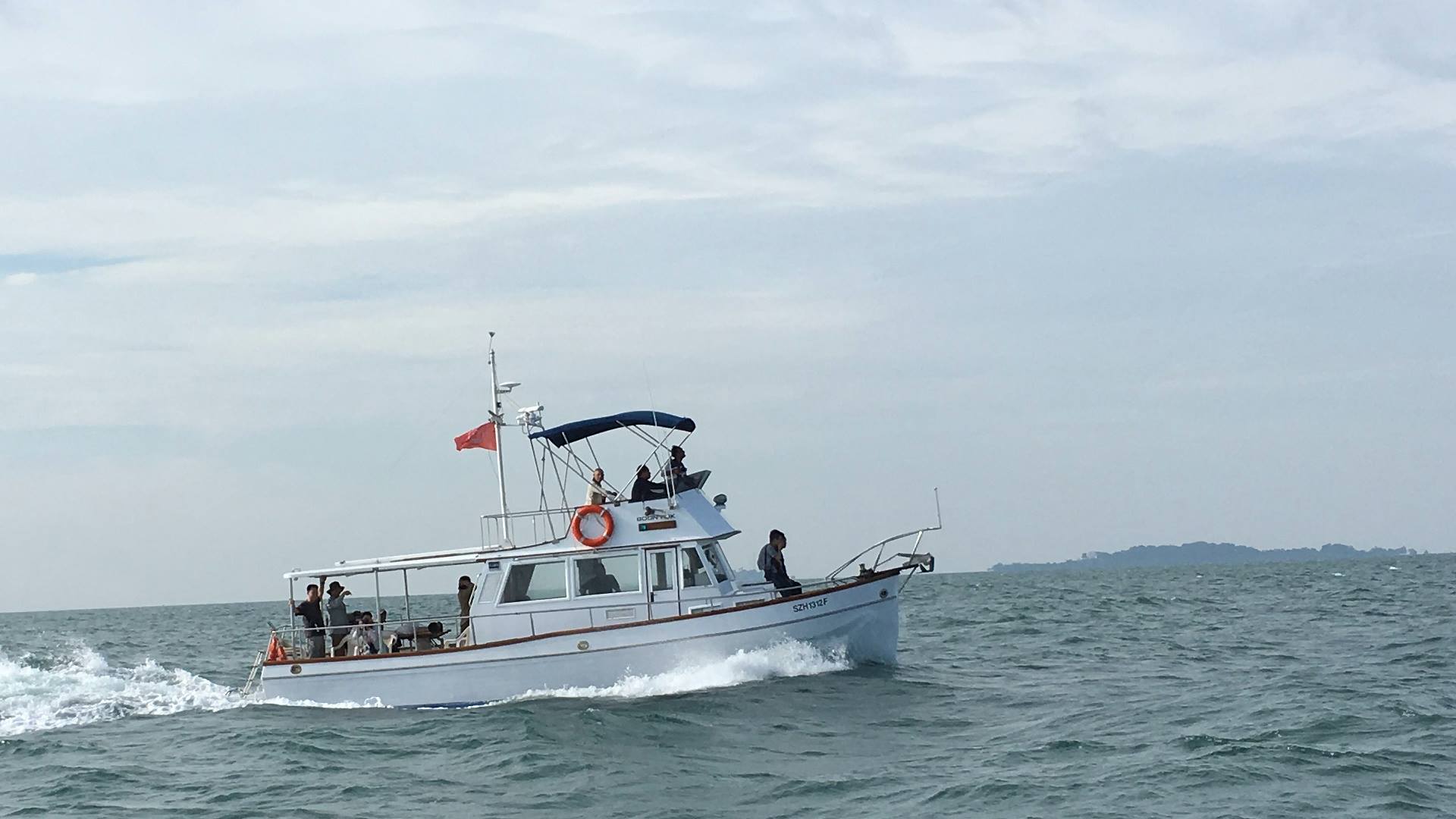
The first interesting (and almost impossible to find inland) is the Bridled Tern.
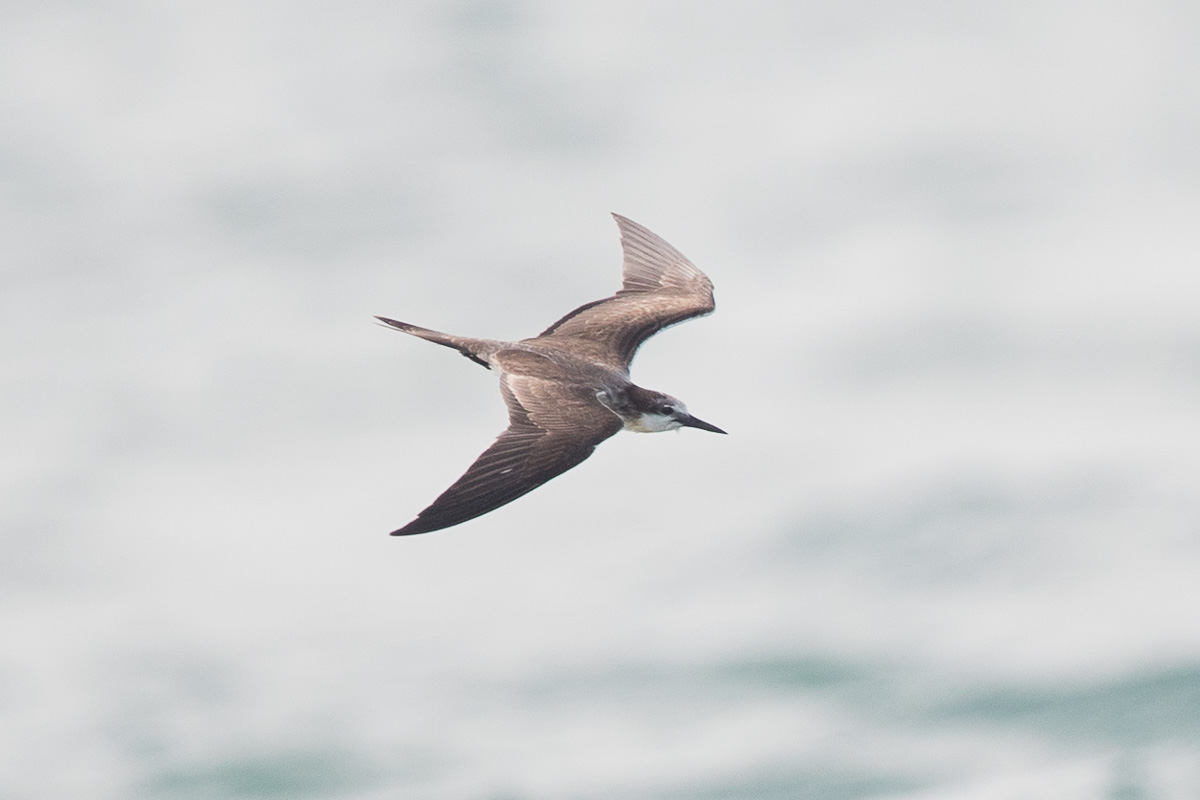
In our excitement and due to the choppy sea condition, one of our participant got slightly hurt knocking against the railings. Two others at “Popeye” soon succumbed to sea-sickness. Things got progressively worse, as the choppy seas coupled with our trailing boat attempt to keep up with the leading boat made for a poor birding experience especially for the first-timers.
We were somewhat cheered up when we saw our first of a few Aleutian Terns flying past around 9:30am. But they were quite far and challenging to photograph. It was only when we started our trip back and made our loop that the ride improved and it was then that we saw our first Aleutian Tern perched on wooden plank. We managed to get the boat nearer for closer shots, and as it flew off from the plank, some shot of it flying pass nicely as well.
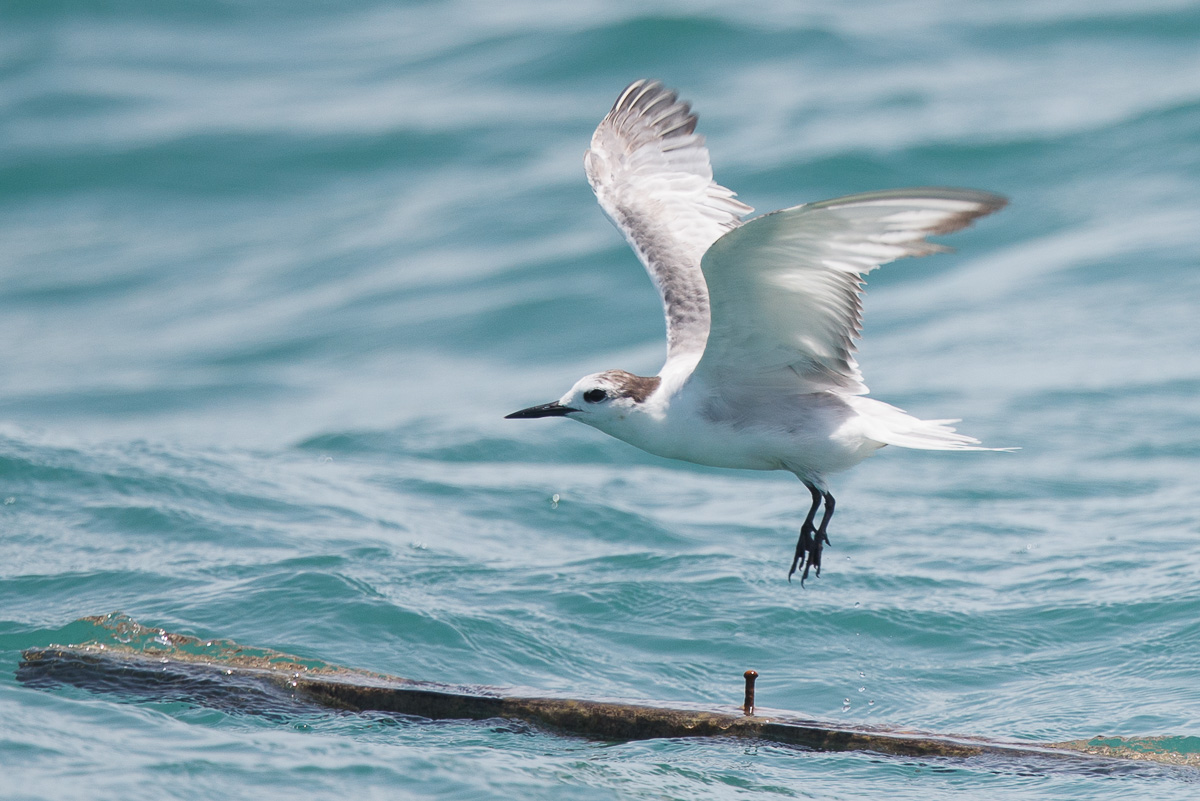

The next tern to excite us was a Common Tern of the subspecies longipennis. It was a quick flyby, but good enough for a positive identification.
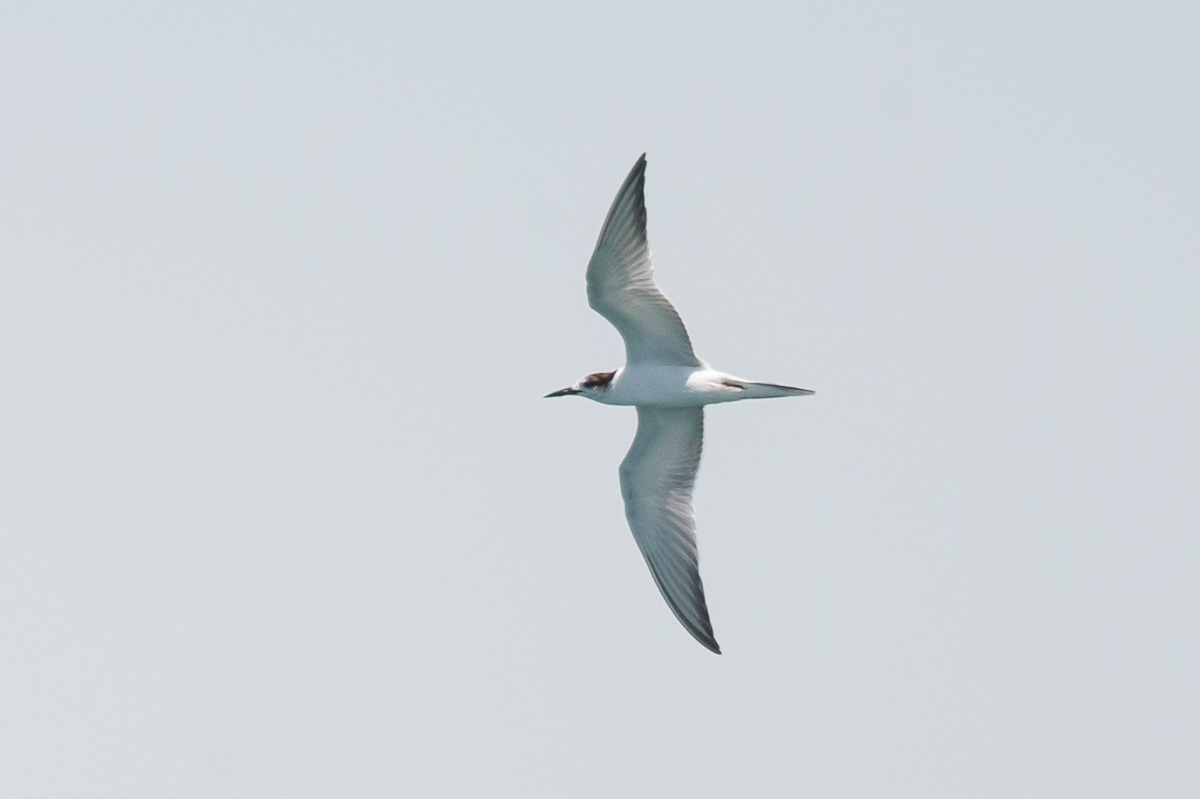
Journeying back, we also kept our eyes on bird species other than the usual seabirds. Not long after our Common Tern encounter, we noticed around 5 Pacific Swift flying low over the sea. These must be in the process of migrating over to Indonesia. We were to again see at least another 9 later at Sisters’ Islands.
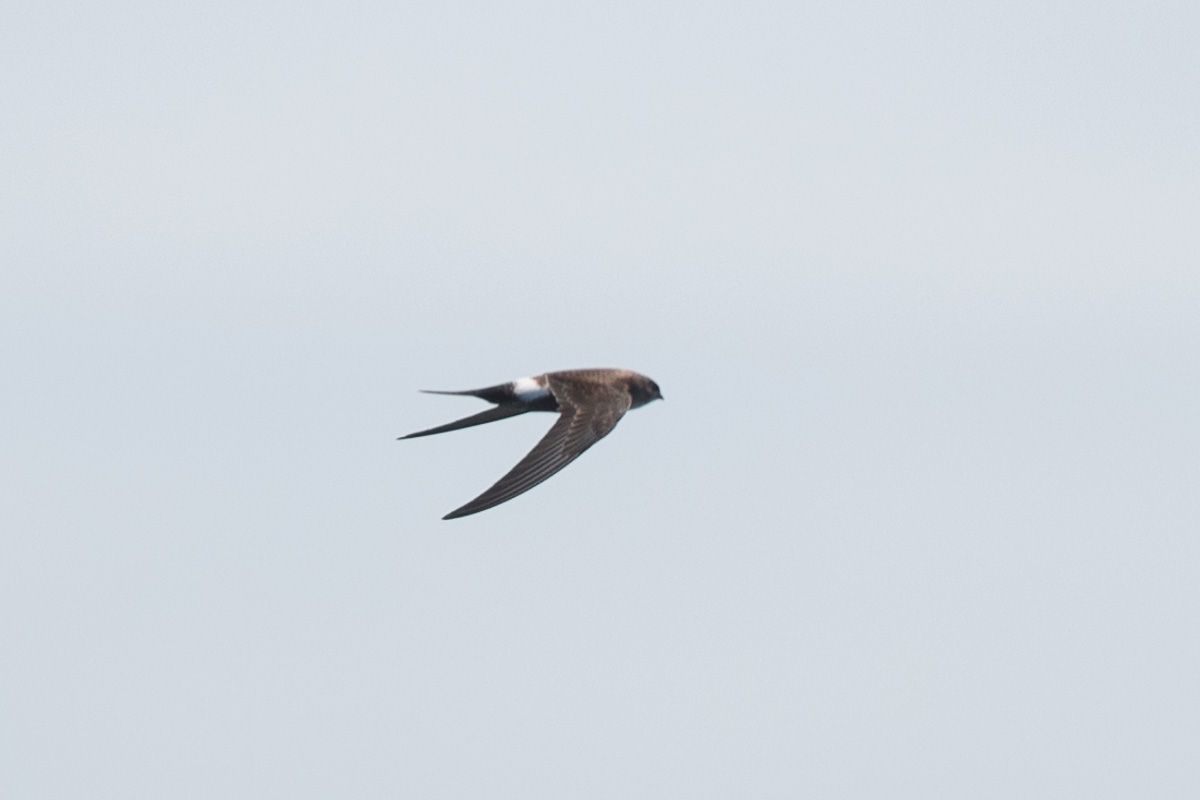
The Swinhoe’s Storm Petrels did not make many appearances. In fact, for the trailing boat, we only saw two in the entire journey. The first was a very brief encounter, but the second permitted at least a closer look and photographs.

After the storm petrel, we encountered the second and last perched Aleutian Tern. Again it cheered up our participants, who by now have generally recovered from their previous sea-sickness. Many photographs were taken of this rarely seen species. We in Singapore should be thankful on the ease of seeing this species in our waters. Despite its name, the Aleutian Tern is not easily seen at the Aleutian islands.
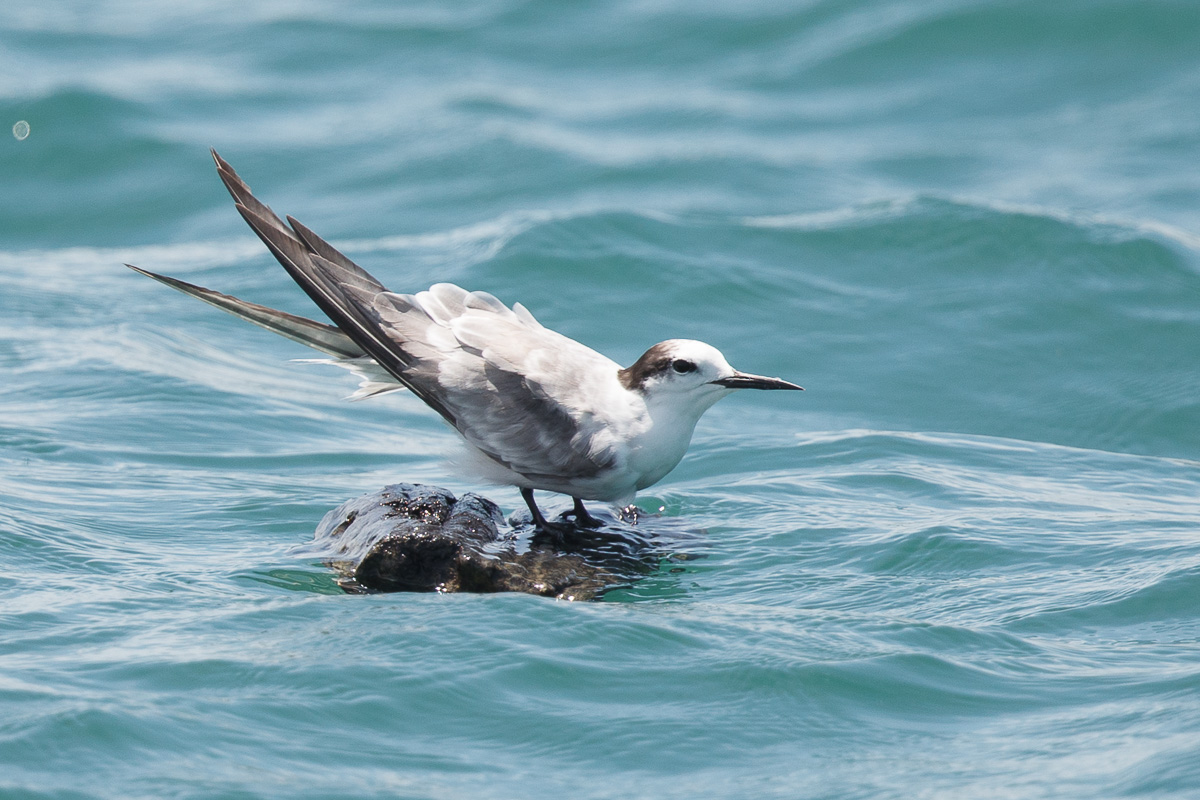
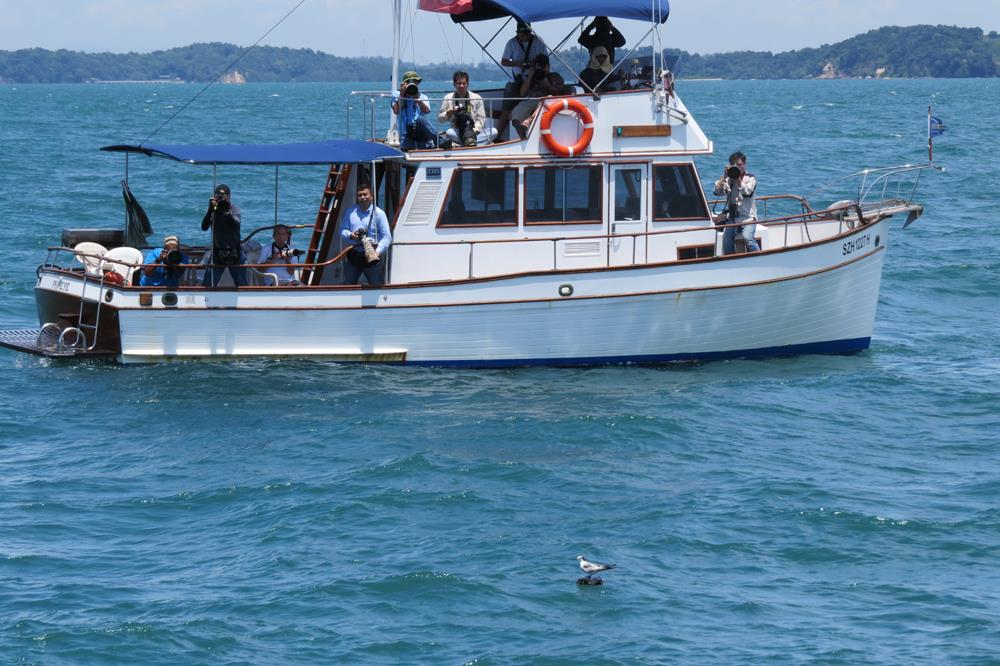
We were to encounter a few more Aleutian Terns along the way. In total we estimate we saw 10-15 of these terns. Quite good numbers. In fact, we think that the western side of the strait holds more of these terns. We were also surprised by the lack of crested terns (Greater and Lesser) that seem to be common birds on the eastern side of the strait. For the Bridled Terns, the trailing boat photographed only 2 birds. Again their numbers seem low in comparison to the eastern side.
After our return and immigration clearance, we have enough time to head towards Pulau Jong for some photographs. It turned out that we saw a pair of nationally threatened Great-billed Herons in breeding plumage. It gives us hope that their numbers will increase soon. A fitting end to our journey!
